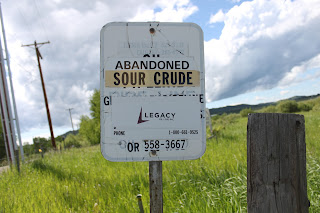Failing Rains, Failing Crops World Faces Hunger
Changing weather patterns around the world are causing
droughts and crop failures. The American mid-west which produces more corn and
soy than any other country is facing the worst drought in 56 years. While the
harvest isn’t in in the US, estimates are that it will be about 30% lower than
usual. Already those bidding on corn commodities have pushed the price up by
about 50%.
Wheat crops in Canada are about normal with adequate
rainfall in most areas except the Peace River area in the north which is dry.
Drought in the Ukraine, Russia and Kazakhstan has curtailed
grain in those countries.
Argentina and Brazil are both experiencing drought
conditions.
India had disappointing rain yield from their monsoon
season.
The global food harvest may be as poor as 2008 when hunger
drove many to agitate for subsidized food supplies. India curtailed the export
of their lower grades of rice so that supplies could be available to their own
residents. This year the expected drop in rice production is estimated at 7.8
million metric tonnes(8.6 million tons).
China seems to have escaped the worst of the weather changes
this growing season. With over 1.3 billion mouths to feed this is good news
indeed. Some areas in northern China can now produce two crops per year because
of temperature increases, but are limited to one because of the shortage of
water.
For the average N. American price increases are expected
across the board and the higher cost for corn is passed through the food chain.
Initially prices for pork and beef may dip as ranchers seek to reduce their
stock to avoid having to purchase more expensive feed. Cattle that would
normally graze are having to be fed from purchased forage crops. Corn and soy
are used extensively in processed foods.
For the poor, the inevitable increases in food prices are a
catastrophe. The World Hunger Education Service states that their latest
figures show that 925 million people were malnourished in 2010. This was down
from the critical 2008. Food aid NGO’s and UN agencies have been forced cut
back their purchases for distribution to the most hungry due to price increases.
The poor spend a far greater proportion of their income on
food. Because foods low in protein are cheaper, the poor are forced to cut back
on protein necessary for health. With the ongoing financial crisis in the
world, more and more people have been pushed from working poor or middle class
to simply poor. People who have been forced to flee areas of armed conflict are
suddenly thrust into the role of destitute beggars. While many of us think of
the poor as “people over there”, hunger is creeping and growing in our
N.American society as our beleaguered food banks can attest.
An academic paper
produced this spring gives cause for more pessimism. The socioeconomics of food crop production and climate
change vulnerability: a global scale quantitative analysis
of
how grain crops are sensitive to drought
discusses the possibility of public unrest and international
conflicts if food production cannot maintain an adequate level of supply. They
estimate that an increase of 70% in food production will be necessary to fend
off these dangers. This seems like an impossibility in the face of climatic
uncertainties.
We have seen wars fought over control of oil supplies, but
you can’t eat or drink oil and you can live without it. You can’t grow crops
without water. You can’t live very long without water. The conflicts will be vicious.
Water Porn: The
Bellagio Water Display in Las Vegas


Comments
Post a Comment